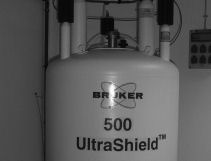
Projects
> Bacterial disease
> Calcium-binding proteins
> G-quadruplexes
> New methods
People
Collaboration
Funding
Publications
di-lanthanide-binding-tag (dLBT) project
Prof. Barbara Imperiali developed the dLBT as a fluorescence, NMR and crystallography tool. A major drawback to this technology is the multiple-step purification protocol needed to produce a dLBT-protein. We are applying a trick from the calcium-binding protein world to reduce the purification protocol to two, or even one, simple steps. Once we have achieved the required purification, we will test new NMR and cryo-electron microscopy protocols. The project is currently unfunded but it suitable as a short project to learn basic protein expression, purification and analysis techniques in the lab. Contact Patrick (pgroves@itqb.unl.pt)
Saturation transfer difference NMR (STD)
STD is an important NMR experiment that reports if a small molecule binds to a large biomolecule, and also which parts of the ligand come into contact with the biomolecule. STD is a particularly powerful experiment when you want to screen small molecule libraries to find the potential building blocks for a new drug. We apply STD to biochemical studies and find that the standard methods are not optimal for our work. For example, a protein can be reduced to a peptide library and the library screened against its protein binding partner to identify and characterize the binding epitopes at the atomic level. This would produce useful information on the protein-protein binding interface and which residues can be mutated to make a loss-of-function mutant. Together with other NMR experiments, the structure of the bound peptide can be determined and used as a template for drug design. In other words, STD can play an important role in the automated study of protein-protein interactions except there is a major flaw. The spectra of proteins and peptides are very similar and it is necessary to selectively irradiate the protein signals. We work with a Hungarian team to overcome this problem by producing 15N-labeled protein in our lab and a new STD pulse program was developed in Hungary that specifically irradiates the protein via the 15N-labeling.
A 13C-STD variation will be used in our annexin studies because the artificial membranes we want to use in our studies provide a very intense (and unwanted) background signal. In this case we will use a 13C-labeled ligand in order to study and compare the ligand interactions with the soluble protein and membrane-bound protein. The new NMR experiments were developed by our Hungarian collaborators and will benefit our work with Polish collaborators.
Diffusion NMR (DOSY)
DOSY reports the diffusion coefficient of a molecule. And the diffusion coefficient is related to relative size and shape of the molecule. We have used DOSY to measure the size of proteins, and to check if they are monomeric or dimeric. We have also developed a test of protein purifity based on DOSY. We have detected and identified flaws in the analysis of detergent titrations in order to determine critical micelle concentrations and micelle size. An active project aims to develop new analytical protocol to compensate for the intrinsic flaws.